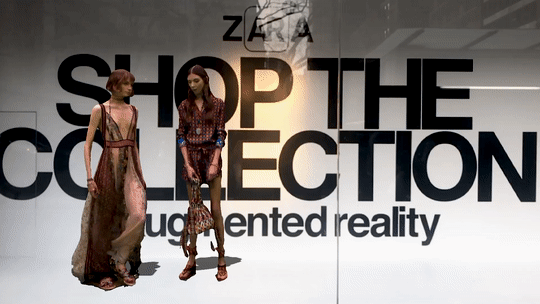In the changing of digital marketing, one trend that has been gaining traction is CGI marketing. This innovative approach has been transforming the way brands communicate and engage with their audiences.
In this blog, we will delve into the world of CGI marketing, its benefits, applications, and future trends.
What is CGI Marketing?
CGI, or Computer Generated Imagery, is a technology that creates graphics using computer software. When applied to marketing, CGI allows brands to create realistic visual content to promote their products or services. This is known as CGI marketing.
It involves the use of 3D models, animations, and virtual environments to create engaging and interactive marketing content.
Importance of CGI Marketing
CGI marketing has become increasingly important in today’s digital age. It allows brands to showcase their products in a more realistic and immersive way, which can significantly enhance customer engagement and conversion rates.
Moreover, it provides a cost-effective solution for creating high-quality visual content, as it eliminates the need for physical prototypes and photo shoots.
Examples of CGI Marketing
CGI marketing has revolutionized the way brands engage with their audiences, offering innovative ways to visualize products, tell stories, and create immersive experiences.
Here are some notable examples of CGI marketing across various industries:
1. Automotive Industry: Audi’s Virtual Showroom
Audi launched a digital showroom called Audi City, where customers can explore the full range of Audi’s models in a compact urban space using CGI and touchscreens.

This approach allows customers to customize and interact with their potential vehicle in high detail, significantly enhancing the customer experience and reducing the need for large physical inventories.
2. Fashion and Retail: Zara’s Augmented Reality Displays
Zara used augmented reality (AR) in their stores to bring static fashion displays to life. Customers could point their smartphones at a display to see models wearing the clothes from Zara’s collection in a CGI-enhanced video.

This innovative use of CGI and AR technology created an engaging shopping experience, driving both in-store and online sales.
3. Real Estate: Virtual Property Tours
Real estate companies are using CGI to create virtual tours of properties that are yet to be constructed.
These virtual tours help potential buyers visualize the space and the layout, facilitating pre-sales and enhancing marketing strategies for new developments.
4. Food and Beverage: Amul’s Animated Advertisements
Amul, India’s famous FMCG brand joined the CGI bandwagon with a Christmas campaign using their brand mascot.
Such ads evoke emotional connections with the audience, reinforcing brand identity and driving product visibility.
These examples illustrate the diverse and powerful applications of CGI marketing across different sectors. Other industries using CGI in marketing are furniture and home decor, film and entertainment, beauty industry, consumer electronics, and many more.
By leveraging CGI, brands can create more engaging, informative, and visually appealing marketing content that resonates with their target audiences, driving sales and enhancing brand loyalty.
#TCCRecommends: Have a look at other marketing trends of 2024.
Types of CGI Marketing
Product CGI
Product CGI involves the use of CGI to create realistic images of products. This can be used to showcase the product’s features, functionality, and design.
Architectural CGI
Architectural CGI, on the other hand, involves the use of CGI to create realistic images of buildings and other architectural structures. This can be used in the real estate industry to showcase properties and attract potential buyers.
The Benefits of CGI Marketing
CGI in marketing offers a multitude of benefits across various industries, revolutionizing traditional marketing strategies with its flexibility, innovation, and efficiency.
Here are the key benefits of integrating CGI into marketing efforts:
1. Enhanced Visual Communication
One of the key benefits of CGI marketing is that it enhances visual communication. With CGI, brands can create highly detailed and realistic images of their products, which can help customers understand the product better.
This can be particularly beneficial for complex products that require detailed visualizations.
2. Increased Brand Engagement
CGI marketing can also increase brand engagement. By creating interactive and immersive content, brands can capture the attention of their audience and encourage them to engage with the brand.
This can lead to increased brand loyalty and customer retention.
3. Unlimited Creative Freedom
One of the most significant advantages of CGI marketing is the virtually unlimited creative freedom it offers.
Marketers can create scenarios, environments, and product visualizations that would be impossible, impractical, or too costly to produce in the real world, enabling the visualization of products in any setting or style.
4. Cost-Effectiveness
While the initial setup for CGI can be an investment, it often proves to be more cost-effective in the long run compared to traditional photography and physical prototypes.
CGI eliminates the need for physical sets, props, location fees, and in many cases, travel expenses, offering a financially efficient alternative for creating high-quality marketing assets.
5. Speed and Flexibility
CGI marketing assets can be quickly updated or modified without the need for reshoots or the creation of new physical prototypes.
This flexibility allows for rapid response to market changes, feedback, or new marketing strategies, keeping content fresh and relevant.
6. Consistency Across Marketing Channels
CGI ensures brand and product consistency across all marketing channels. Whether for print, online, or television advertising, CGI can maintain the same lighting, angles, and product details, reinforcing brand recognition and consistency in the customer’s mind.
7. Scalability
CGI assets can be easily scaled and repurposed for different marketing campaigns and platforms, from detailed images for print to animated videos for social media, providing a versatile toolset for marketers to engage with diverse audiences.
8. Reduced Time to Market
By using CGI, companies can start marketing their products even before they are physically produced.
This is particularly beneficial for industries like real estate and automotive, where products can take a long time to go from concept to market.
9. Interactive and Immersive Experiences
CGI allows for the creation of interactive and immersive experiences, such as virtual tours, augmented reality (AR), and virtual reality (VR) applications.
These technologies can significantly enhance customer engagement, allowing potential buyers to explore products or spaces in a highly interactive manner.
10. Environmental Benefits
By reducing the need for physical prototypes, samples, and the logistics associated with traditional photo shoots, CGI marketing contributes to sustainability and reduces the environmental footprint of marketing operations.
11. Data Insights and Personalization
CGI, especially when combined with interactive technologies like AR and VR, can provide valuable data insights into customer preferences and behaviors.
This data can be used to personalize marketing efforts and product offerings, further enhancing the effectiveness of marketing campaigns.
CGI marketing represents a powerful, flexible, and cost-effective approach that can elevate a brand’s marketing strategy.
How CGI Marketing Works
Creation of Realistic Virtual Environments
The first step in CGI marketing is the creation of realistic virtual environments. This involves the use of 3D modeling software to create detailed models of the product. These models can then be placed in a virtual environment, which can be customized to match the brand’s aesthetic.
Integration of CGI with Marketing Strategies
Once the virtual environments and models have been created, they can be integrated into the brand’s marketing strategies. This could involve using the CGI content in social media campaigns, online advertisements, or on the brand’s website. The goal is to use the CGI content to enhance the brand’s visual communication and engage with the audience.
Improved Product Understanding
CGI animations can demonstrate the functionality, features, and benefits of a product in ways that static images or text cannot. By visually breaking down complex products or showing products in use, CGI helps improve customer understanding and confidence in the purchase.
The impact of CGI marketing extends far beyond just creating pretty pictures; it revolutionizes how brands connect with their customers, offering unparalleled opportunities for engagement, storytelling, and personalization.
As technology continues to advance, the possibilities for CGI in marketing will only expand, promising even more innovative ways to captivate audiences and drive brand growth.
Challenges of CGI Marketing
While CGI marketing offers numerous advantages, from enhanced visual appeal to cost efficiency, it also presents several challenges that businesses must navigate.
Here’s a closer look at some of the key challenges associated with CGI marketing:
Technical Complexity
One of the main challenges of CGI marketing is its technical complexity. Creating CGI content requires specialized skills and software, which can be a barrier for some brands.
Cost Considerations
While CGI marketing can be cost-effective in the long run, the initial investment can be high. This includes the cost of software, hardware, and hiring or training staff.
Time-Consuming Production
High-quality CGI, especially complex animations, can require significant rendering time, potentially slowing down the production process.
The iterative process of making changes and revisions can also be time-consuming, particularly for detailed or intricate CGI work.
Customer Skepticism
Some customers may view CGI-created images with skepticism, preferring real product photos for authenticity. Overcoming this perception and establishing trust can be challenging.
There’s also the risk of CGI creating unrealistic expectations about a product, leading to potential customer disappointment with the actual product.
Integration with Traditional Media
Ensuring that CGI content integrates seamlessly with traditional media and live-action footage in multi-faceted marketing campaigns can present logistical and aesthetic challenges.
Optimizing CGI content for various platforms – from print to social media to video – requires understanding the nuances of each channel.
Future of CGI Marketing
One future trend in CGI marketing is the integration of CGI with artificial intelligence. This could involve using AI to create more realistic and personalized CGI content.
Another future trend is the advancements in augmented reality. With AR, brands can overlay CGI content onto the real world, creating an even more immersive experience for the user.
Conclusion
In conclusion, CGI marketing is becoming increasingly important in today’s digital age. With its ability to create realistic and immersive visual content, it can significantly enhance a brand’s visual communication and customer engagement.
Looking ahead, the future of CGI in marketing looks promising. With advancements in technology and increasing consumer demand for immersive experiences, CGI marketing is set to become even more prevalent in the coming years.
